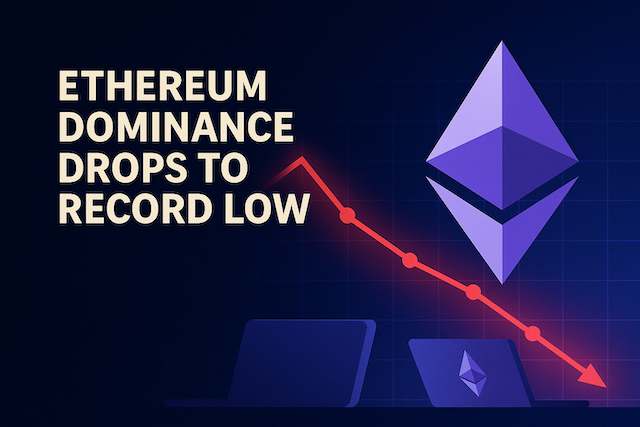Ethereum dominance, once a telling characteristic of the universe of blockchains, is rapidly shifting. By April 2025, Ethereum’s proportion of the total value locked (TVL) on all blockchains had declined from about 96% in 2021 to 51%. This decline shows how fluid the universe of blockchains is. It also highlights how much flexibility and imagination matter.
Ethereum Dominance : Declining Trend
Since Ethereum was the first, there are newer, more efficient, and scalable to take its place. For example, Solana handles 86 million transactions per day and boasts over 4 million active addresses. This is a clear sign of its increasing popularity. Also, these statistics indicate that users are choosing platforms prioritizing speed and affordability.
Ethereum Dominance: Layer-2 Solutions’ Impact
Despite being designed to address Ethereum’s scalability challenges, L2 solution development has unfortunately influenced Ethereum’s monopoly indirectly. By processing a high percentage of transactions, they redirect activity from the mainnet. This redirection could have a bearing on its overall value proposition. Such disorder underscores the necessity for unified plans to preserve Ethereum’s central position.
Ethereum Dominance: Custom Blockchain Development
Blockchain space is being redefined by new entrants such as Hyperliquid and Berachain. Hyperliquid is trading in derivatives with high throughput, and Berachain has caught up quickly with its proof-of-liquidity concept. These niche competitors break Ethereum’s monopoly by offering specialized solutions tailored to industry-specific needs.
Market and Regulatory Factors
The GENIUS Act and regulatory reforms are impacting the trend path of Ethereum. Solana-style platforms benefit from more transparent regulatory guidelines. These initiatives are directly impacted by the Act’s emphasis on stablecoin regulation. Ethereum’s market share is declining as a result of capital shifting away from altcoins due to Bitcoin’s growing dominance, which is currently at 63.5%.
Conclusion
The era of Ethereum is at a crossroads. While it is a foundational principle of the blockchain universe, tactical realignments must be made. Ethereum must adapt to nimble new players and shifting regulatory landscapes. It must prioritize scalability, interoperability, and people-oriented innovations to compete. The future of Ethereum is contingent on its ability to adapt to the rapidly evolving blockchain universe.
